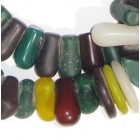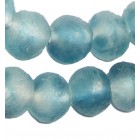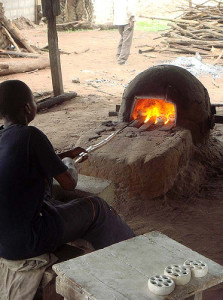Western tribal fashion is a melting pot of style elements inspired by African tribes, however, it is the Fulani who appear to have more influence than most. From their huge brass hoop earrings to their layered beaded chokers, the Fulani are one of the most decorated of all African tribes, and competition is rife among women who want to look their best. But, there are reasons for this competitiveness.
The Benin Festival, commonly held at the end of the rainy season, is one of the most important dates in the Fulani calendar. Traditionally, it was a time for giving thanks to the deities for a bountiful harvest, however, it has also evolved to become an important occasion for the ritual acquaintance of young, eligible men and women. The Benin Festival is a matchmaking endeavor of sorts, however, only the wealthiest families are permitted to take part.
Preparation for the Benin Festival begins up to six months in advance. Due to the weight of the heavy bead and brass adornments customarily worn, young women must learn to adopt certain postures, and dance whilst wearing their full ceremonial regalia. Often, the jewelry is so heavy, that the women must hold their arms above their heads for the duration of the celebration to carry the weight. Their hair is expertly braided incorporating hundreds of coral beads into the style. To the Fula, the bigger the hairstyle and more beads used, the wealthier the family tends to be.
Lastly, the necklace adornments must be chosen. A Fulani women will typically wear multiple strands of heavy glass beads – including Mali Wedding Beads gifted to them by their mothers when they come of age. Strands of mock coral beads known as “Ateyun Beads” are also worn, usually by women whose families cannot afford the real thing. The size and weight of beads worn is perhaps the most telling indication of a family’s wealth and status. Those whom lavish their daughters with the most glass beads are generally considered to be higher up the social ladder.

Large Mali Wedding Beads

